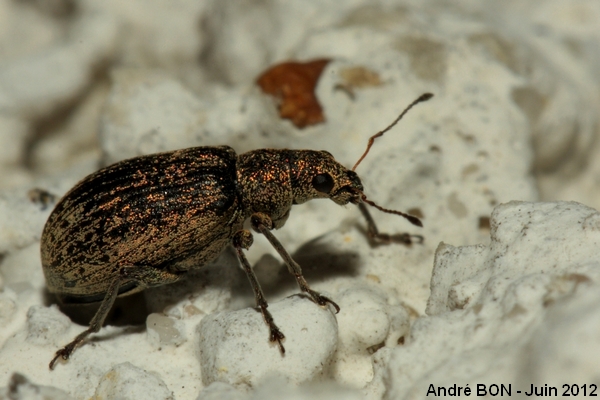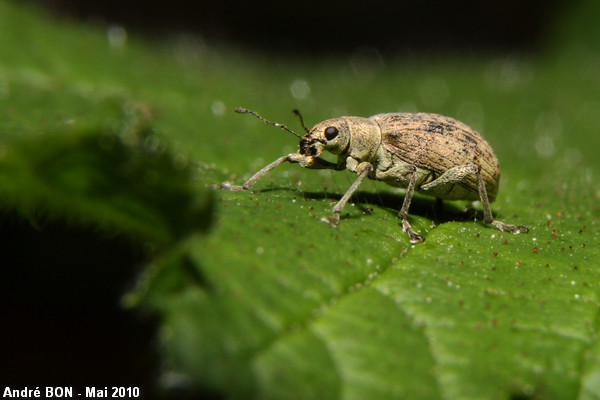


| Polydrusus cervinus (Linnaeus 1758) |



|
|
Scientific name: Polydrusus cervinus (Linnaeus 1758) Common name: French name: Charançon vert-bleu du bouleau Order: Coleoptera Family: Curculionidae Wingspan : 4 to 6 mm. Biotope: Many trees, shrubs and bushes with a strong preference for Birches. Geographic area: Europe, northern Asia. Introduced to Canada. Observation period : April to July. |
You can distinguish weevils of the Polydrusus genus compared to weevils of the Phyllobius genus from the shape of the scrobe (line where the antenna is inserted). It is rather straight, short and hardly visible on Phyllobius while it is curved and extends as far as below the eyes on Polydrusus. Polydrusus cervinus is a variable colour, grey, green or golden. The antennal scrobes are long. The elytra are longitudinally striated and show dark desquamated dots drawing a kind of chequered pattern. |
| [To know more about the Polydrusus cervinus] [Next picture] [Top] |

|
I am used to observing many insects, including Polydrusus cervinus, on the the rough-cast of the outside northern wall of my house. |
| [To know more about the Polydrusus cervinus] [Next picture] [Previous picture] [Top] |

|
I have shot this picture in the low growing vegetation located under one birch tree of my garden. |
| [To know more about the Polydrusus cervinus] [Previous picture] [Top] |

|
Polydrusus cervinus is rather easy to photograph as there is no disgraceful reflection caused by the flash light on the elytra. |